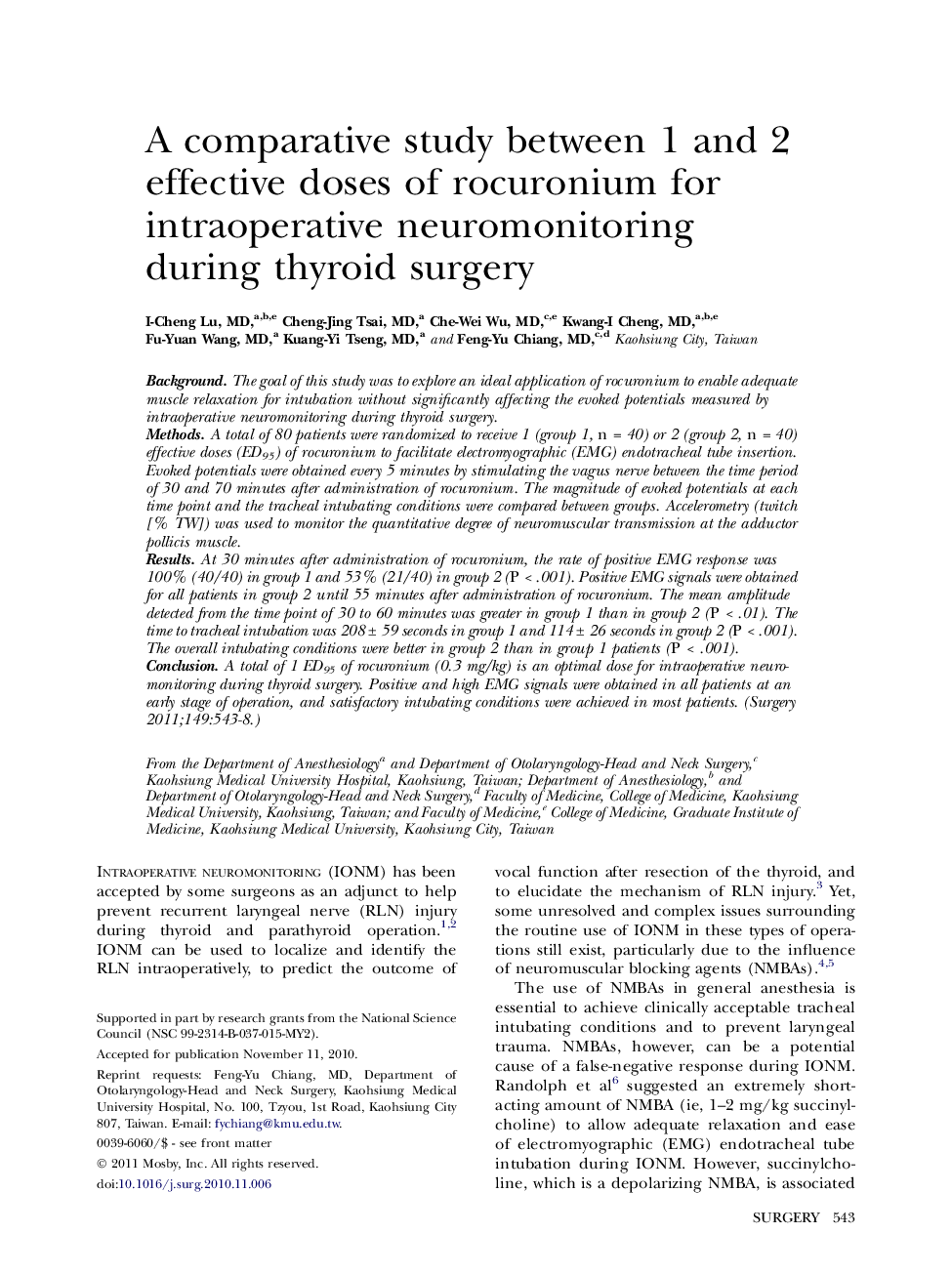| Article ID | Journal | Published Year | Pages | File Type |
|---|---|---|---|---|
| 4308890 | Surgery | 2011 | 6 Pages |
BackgroundThe goal of this study was to explore an ideal application of rocuronium to enable adequate muscle relaxation for intubation without significantly affecting the evoked potentials measured by intraoperative neuromonitoring during thyroid surgery.MethodsA total of 80 patients were randomized to receive 1 (group 1, n = 40) or 2 (group 2, n = 40) effective doses (ED95) of rocuronium to facilitate electromyographic (EMG) endotracheal tube insertion. Evoked potentials were obtained every 5 minutes by stimulating the vagus nerve between the time period of 30 and 70 minutes after administration of rocuronium. The magnitude of evoked potentials at each time point and the tracheal intubating conditions were compared between groups. Accelerometry (twitch [% TW]) was used to monitor the quantitative degree of neuromuscular transmission at the adductor pollicis muscle.ResultsAt 30 minutes after administration of rocuronium, the rate of positive EMG response was 100% (40/40) in group 1 and 53% (21/40) in group 2 (P < .001). Positive EMG signals were obtained for all patients in group 2 until 55 minutes after administration of rocuronium. The mean amplitude detected from the time point of 30 to 60 minutes was greater in group 1 than in group 2 (P < .01). The time to tracheal intubation was 208 ± 59 seconds in group 1 and 114 ± 26 seconds in group 2 (P < .001). The overall intubating conditions were better in group 2 than in group 1 patients (P < .001).ConclusionA total of 1 ED95 of rocuronium (0.3 mg/kg) is an optimal dose for intraoperative neuromonitoring during thyroid surgery. Positive and high EMG signals were obtained in all patients at an early stage of operation, and satisfactory intubating conditions were achieved in most patients.
